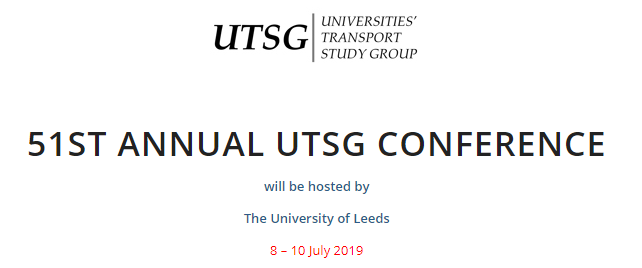Portfolio
What the passenger really wants: rail user centric planning and mobility
L’articolo “What the passenger really wants: rail user centric planning and mobility“, sviluppato in collaborazione con l’Università di Leeds, UITP e FIT Consulting, è stato presentato durante la 51st Annual UTSG Conference (tenutasi a Leeds dal 8 al 10 Luglio 2019). La pubblicazione si iscrive nel più ampio ambito delle attività di dissemination del progetto Smart Maintenance and Rail Traveller Experience (SMaRTE) della Commissione Europea.

Abstract
This paper reports on findings from the ongoing Shift2Rail project SMaRTE which aims to understand current and future needs of railway passengers. As part of this work, the study reported here investigates aspects of the rail traveller’s experience which could be improved and simplified through information and mobility support. As part of this study we conducted surveys on a number of representative transport users, including non-rail users, to define and measure the influence of key factors on the choice of a transport mode, including railway. The survey design took inputs from a literature review, as well as from workshops with industry stakeholders and focus groups with passengers (retirees, commuters and students), held in three EU countries (Italy, Ireland and UK).
Three European cities (Leeds, Brussels, Rome) in partner countries were chosen as catchment areas to examine variation (or similarity) in passengers’ experience in different European rail system. These cities were selected to have broadly similar characteristics of rail-based public transport services.
Respondents (c. 400 in each city) were recruited through an on-line panel of individuals to undertake an on-line revealed preference exercise, where we asked them to consider a number of recent journeys, by train and other modes, and then to categorise the identified factors within distinct stages of a journey (eg planning and booking, station access, waiting experience, in-vehicle experience, egress) in terms of a importance and satisfaction.
Through a quantitative (regression-based) and qualitative analysis of the passenger survey responses, we identify the relative levels of importance and satisfaction with quality of service attributes for rail vis-a-vis other modes. We identify travel satisfaction with recent rail experiences (last 3 months) as a function of the relative importance that users place on various aspects of the journey experience and the associated levels of satisfaction with these aspects. We also analyse the ratings given to identified reasons why rail wasn’t chosen for particular journeys.
Using the large dataset we are able to cross compare results across different areas and user types and make robust findings as to the key gaps in provision for rail passengers and barriers for non-rail passengers, having considered a large number of attributes to capture journey experience.
Autori
Daniel Johnson, Kate Pangbourne, Jeremy Shires (Institute for Transport Studies), Carlo Vaghi (FIT Consulting), Simon Mastrangelo, Simone Lettieri (Ergoproject)

Risorse aggiuntive
Risorse aggiuntive (link)
Torna al porfolio
